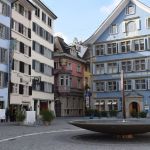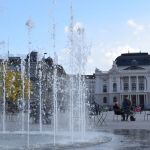From swimming in the crystal clear Lake Zurich to attending a ballet at the Opera House to shopping on Bahnhofstrasse, the most expensive retail street in Europe, there is a great variety of things to do and see in Zurich. Listen to the talented street musicians or visit one of the many grandiose churches. The choice is up to you!
A special thanks to Erme from Free Walk Zurich who gave an amazing tour despite the rainy weather.
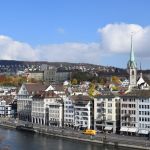
The two beige buildings in the distance are the large state universities of Zurich. The one behind the church tower is the administration building for the University of Zurich. To the left, we see the Eidgenössische Technische Hochschule (ETH) Zürich. 21 Nobel Prize winners have graduated from ETH, including Albert Einstein. Behind the University of Zurich is the University Hospital, which boasts "we operate on more hearts per day than Casanova broke in his life".
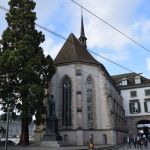
Most churches in Zurich are very plain due to the reformation, led by Ulrich Zwingli. Zwingli was the leader of the reform in Zurich and rejected pilgrimages, processions, celibacy, payment of indulgences, monasteries, pictures of saints and relics and organ music. The statue at the front of the church is of Ulrich Zwingli.
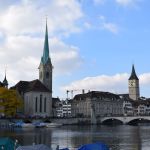
The green colored roof is the clock tower of the Fraumünster Church. It's located at the edge of Limmat River, near the mouth of Lake Zurich. In 853, King Ludwig (Louis the German), grandson of Emperor Charlemagne, ordered it built for his daughter Hildegard. Hildegard died in 856 and her sister Bertha took over. An 11th century royal decree gave the church the right to mint coins, collect tolls and hold markets. The nuns were the formal rulers of Zurich until 1524, when the last abbess Katharina von Zimmern ceded all of the land and power to the state. Nonetheless, in the 1970s, Marc Chagall, a Belarussian Jew, painted 5 stained windows for the church named Prophets (red), Law (blue), Jacob (navy), Zion (yellow) and Christ (green).
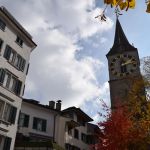
St. Peter Church has the largest clock face in all of Europe (including the Big Ben). It is the oldest clock tower in the city dating back to the thirteenth century. Since it is also the highest spot in the city, it has been used by the fire brigade since 1911. Locals joke that fire is Zurich's greatest enemy because of the closeness of the houses.
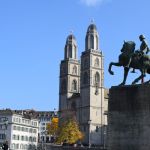
In the background, we see the Grossmünster church, lovingly called the salt and pepper shakers. The story goes that Felix was an officer in a Christian legion from Egypt in the third century. When this legion was martyred, Felix and his sister, regular, fled to Zurich where they were beheaded. They then walked to the place where they wished to be buried, the now Grossmünster Church.
In the foreground we see a statue of a man on a horse. The man was the mayor at the time. It is said that the mayor was killed because he raised taxes on the citizens. It now stands as a warning in front of a couple government buildings to not raise taxes.
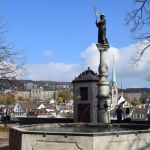
This statue in Platzgasse is to commemorate the women of 1851 who disguised themselves as soldiers to scare the invading army way from the opposite bank where the Swiss troops had lost the battle.
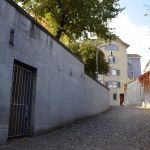
Zurich has 8.5 million bunkers. While the last time that Switzerland has been involved in a war was when it was conquered by Napoleon, the Swiss keep the bunkers because they "like everybody but they don't trust them" (according to the tour guide). Currently, Switzerland has mandatory military service. Men between the ages of 18 and 20 must complete five weeks of training and go to repetition every year for three weeks. While the time in service is paid really well, millennials view it as a waste of time. Thus, only 35% join the army because of claims of psychological or physical problems.
